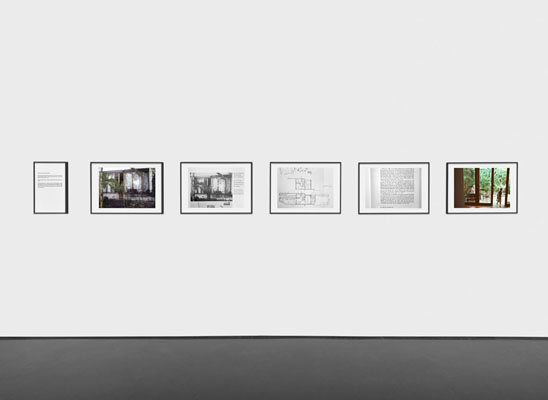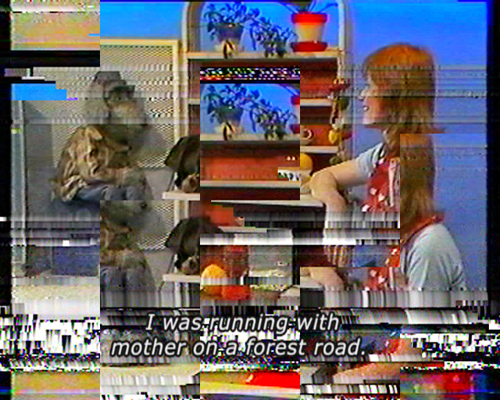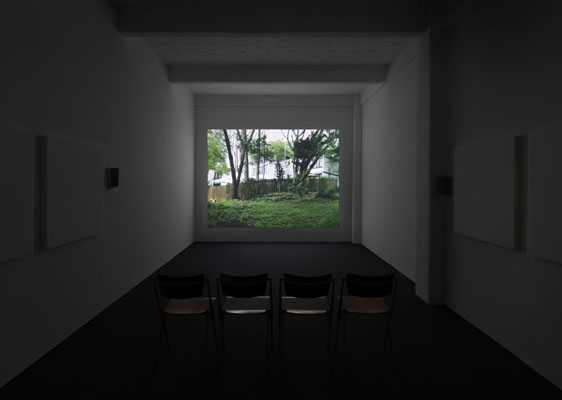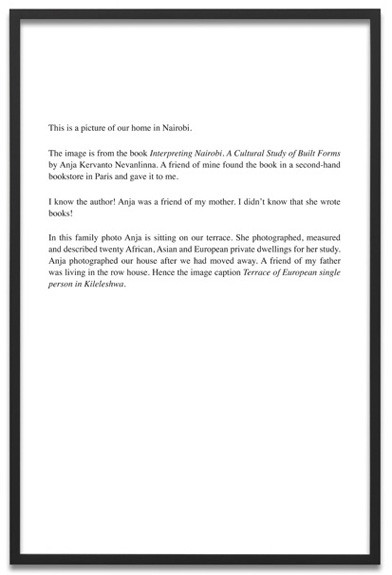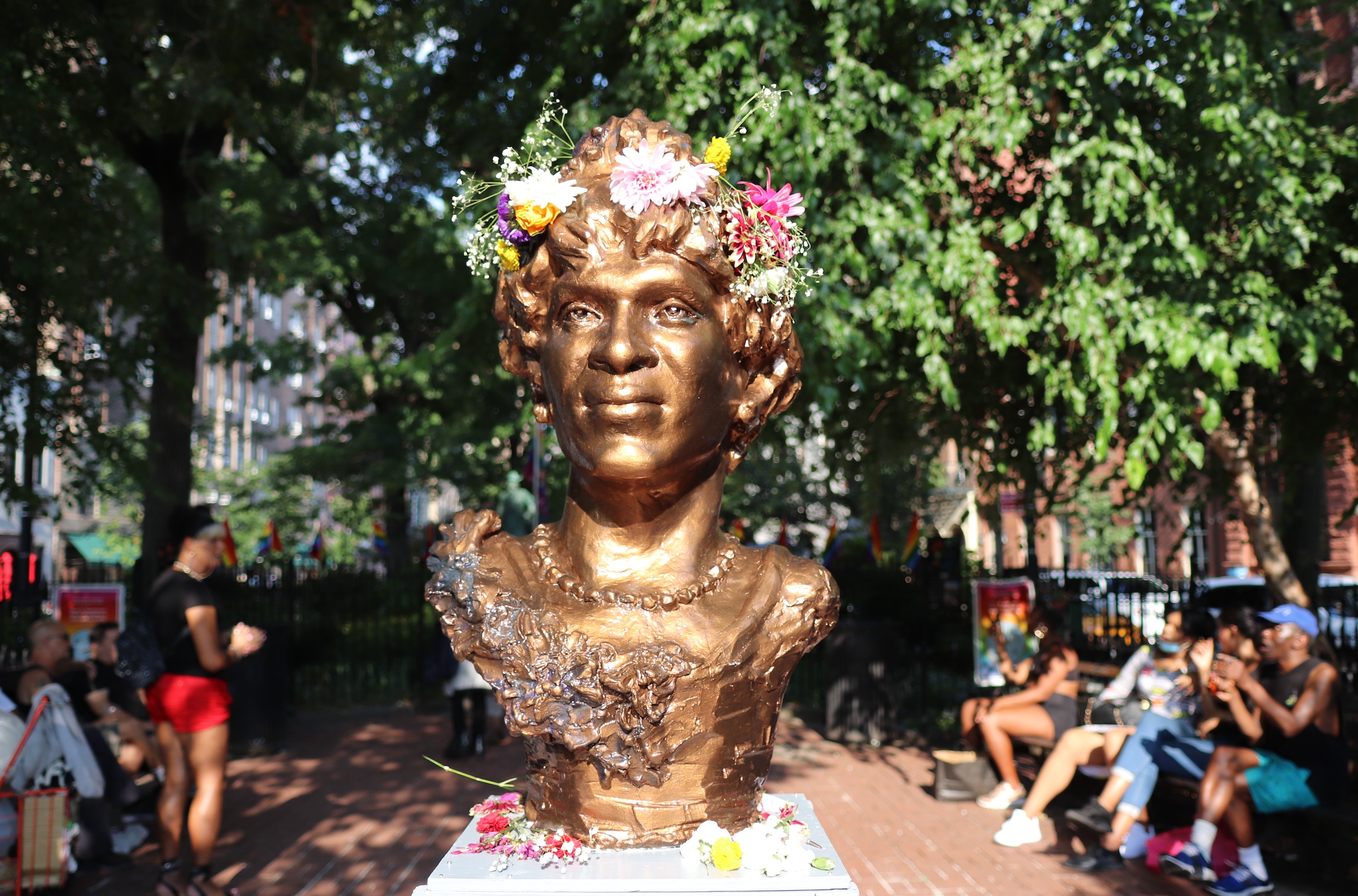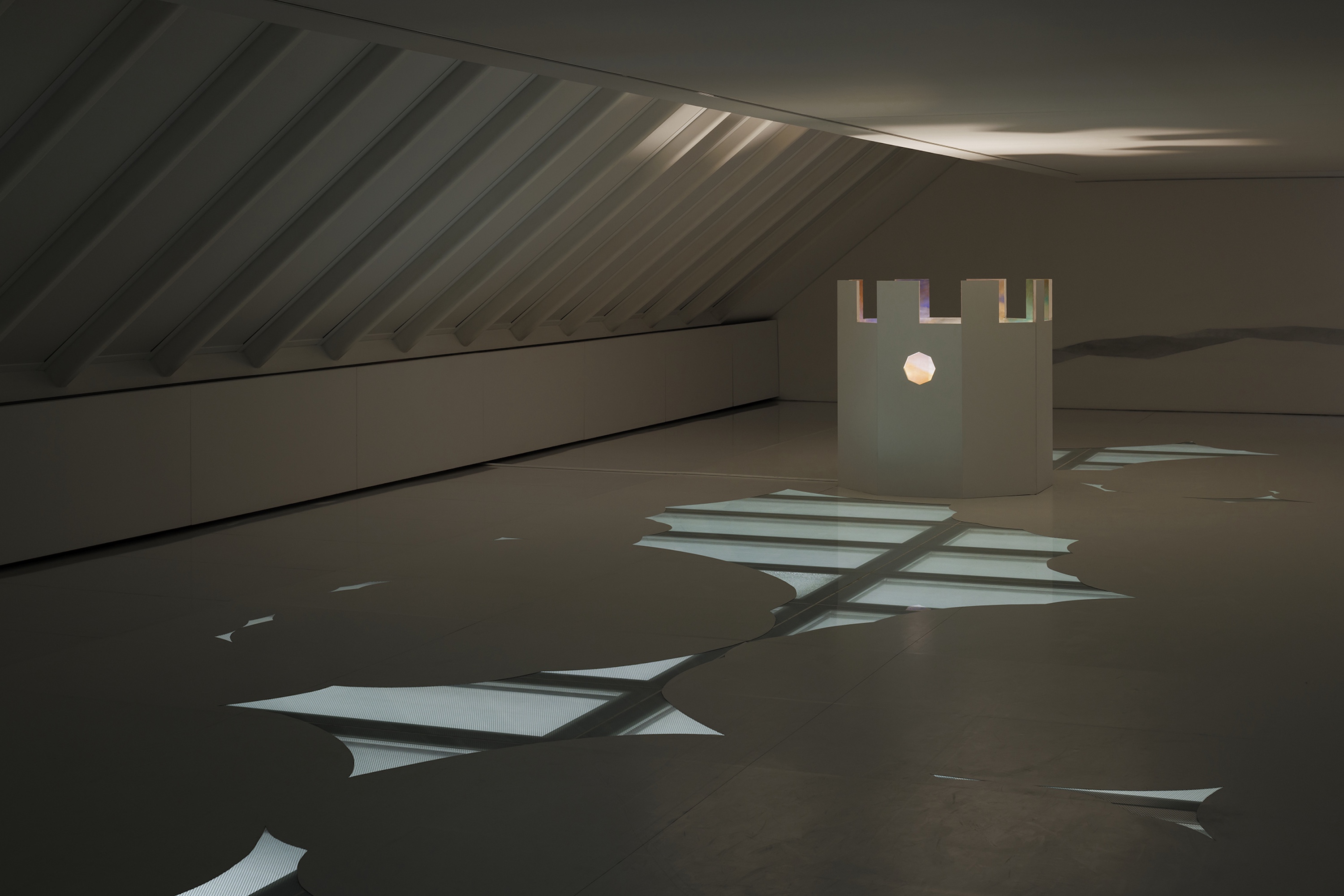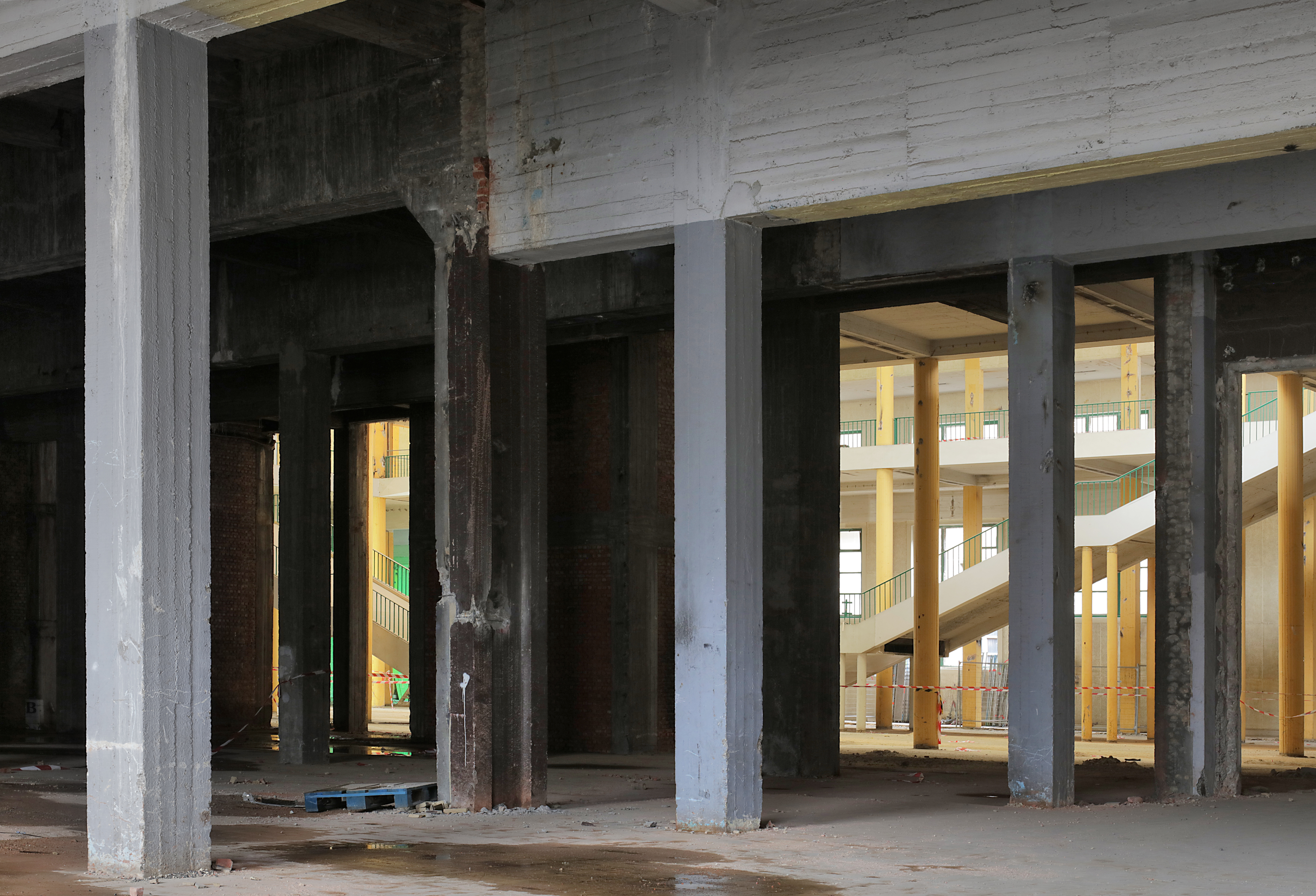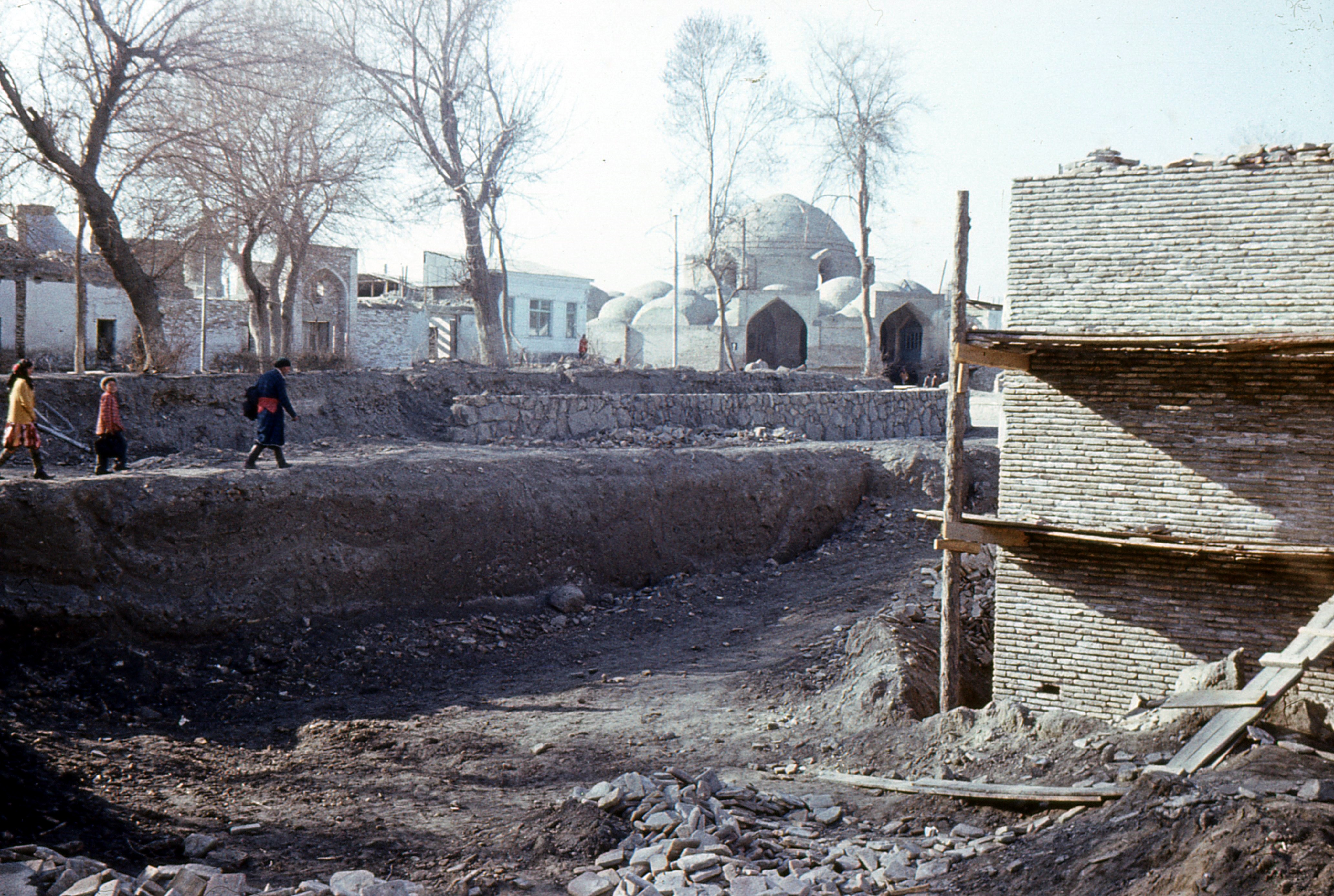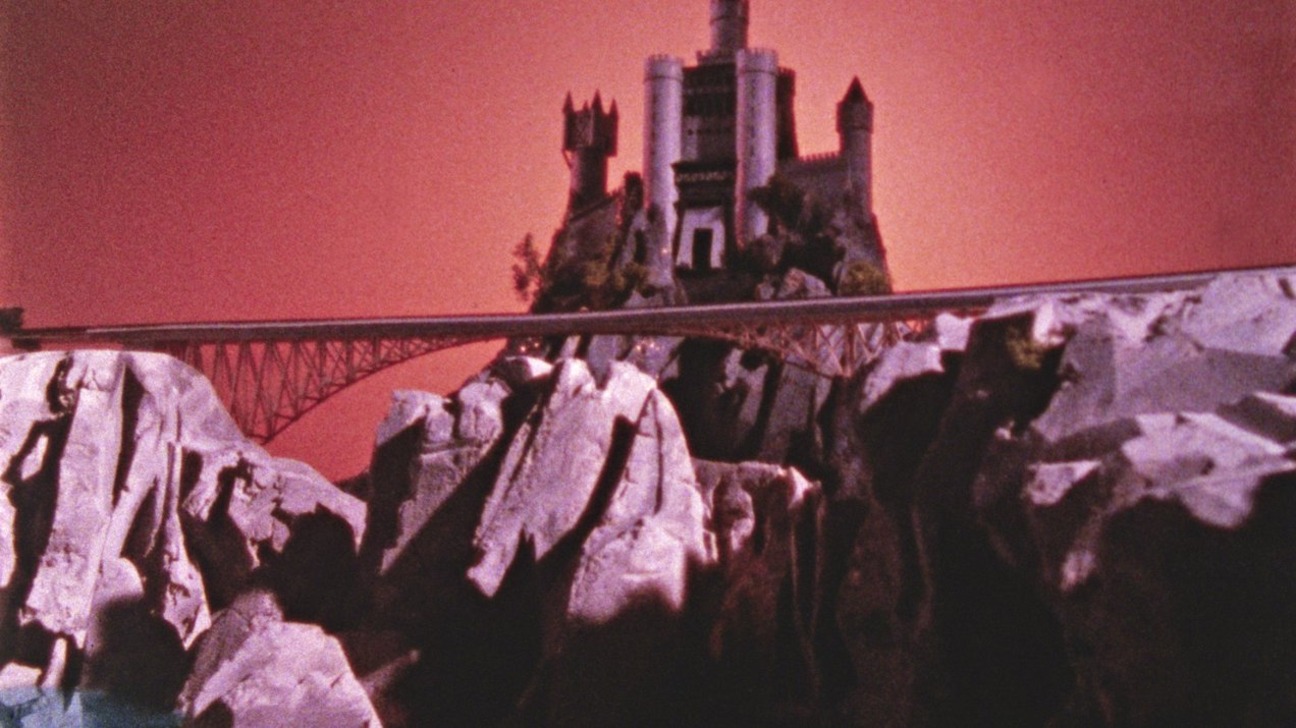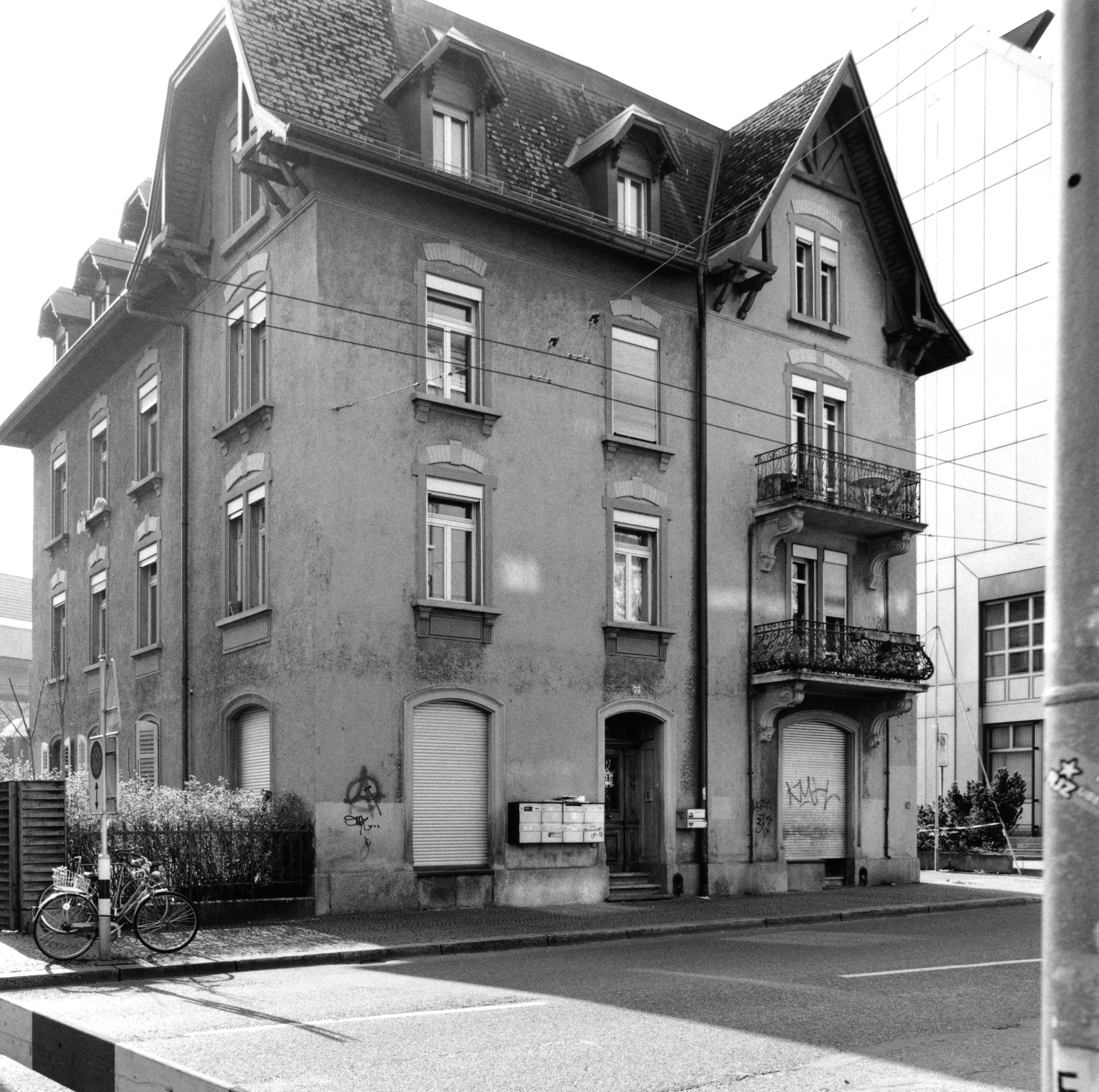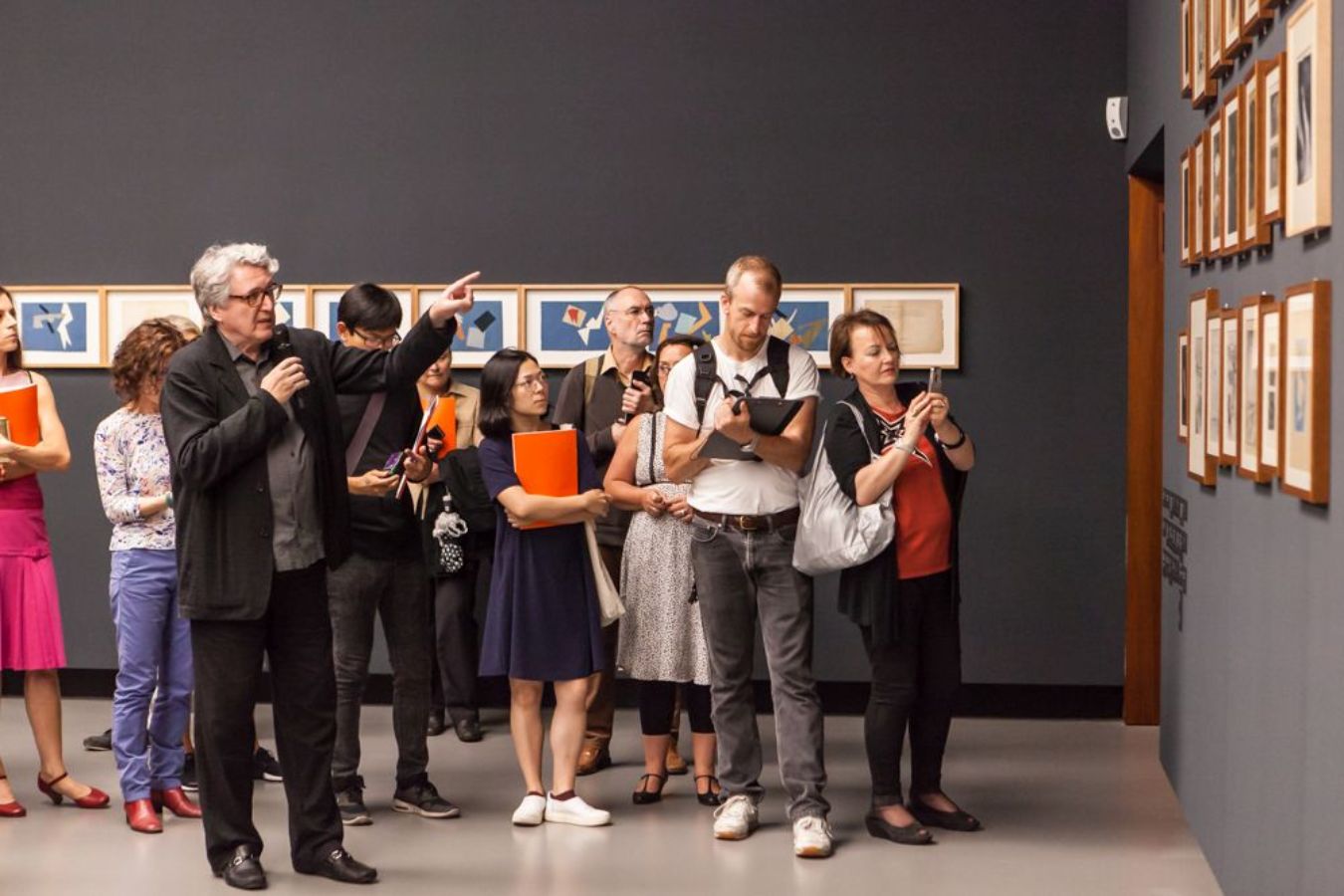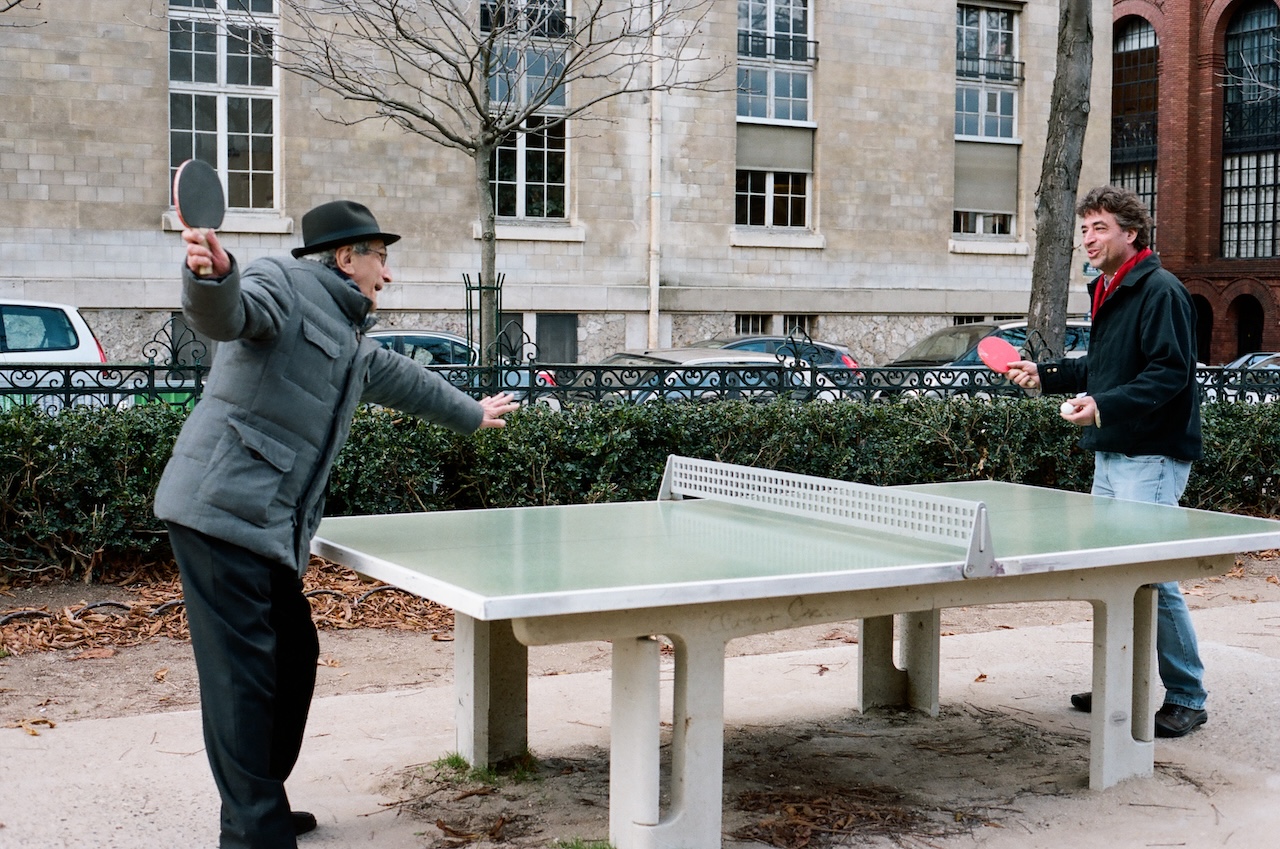November 25, 2011–January 7, 2012
From the first, Laura Horelli’s exhibition "The Terrace" is a movement backwards; a complex history is laid out for us to enter and reconstruct. Along the wall leading away from the gallery’s entrance is a series of six images and texts entitled Terrace of European Single Person in Kileleshwa (2011), which reveal information progressively. The first photograph depicts a young girl entering from a terrace, where a woman sits on a wicker chair before a backdrop of exotic plants. To the left of that photograph is a text describing a house topographically, designating spaces as private, public, or those used by the domestic staff. To the left of that is the house’s architectural floor plan. Next is a black-and-white illustration from a book depicting that same terrace from the first photograph, but as seen from the garden beyond it. Then we see the original version of that photo in full color. Lastly, we encounter a text revealing that everything we have just seen pertains to the Finnish artist’s childhood home in Nairobi, Kenya. The series appears to have been developed from a method at once inquisitive and analytical, based on personal understanding as well as empirical research.
Such is the variable territory occupied by this exhibition. By investigating her own experience as if it were a paradigm, the artist produces works that are formally and strategically intelligent, and which constitute much more than a retelling of one individual’s experiences. In fact, although Horelli recounts her own experience, she mostly withholds reflexive claims on the information, i.e., by not including a signature in the aforementioned letter. Thematically, Horelli’s works are quite expansive.
One of two video works constituting the rest of the exhibition, Haukka-Pala (A-Bit-to-Bite) (2009) comprises excerpts from a television program which Horelli’s mother had starred in following the family’s return to Finland from Kenya. The show was clearly addressed to children, emphasizing an appreciation for traditional Finnish foods and good eating habits. In it, Horelli’s mother, a nutritionist, is dressed in an apron and sits on a stool in a kitchen speaking to a puppet dog. In a voiceover, the artist explains that her mother seems somehow unfamiliar here; for one thing, her mother did not own an apron. Her mother’s on-screen presence—which likely constitutes a significant part of Horelli’s memory of her––is fleshed out by Horelli’s reading of excerpts from her mother’s diaries as well as by statements that sound as if they were expressed by a child: "Mother went to the hospital. Mother stayed in hospital. I never saw her again." In such a way, we ascertain that Horelli’s mother died of cancer when the artist was ten years old. In the video’s greatest moments, her mother’s gestures are extended into slow motion, and the film passes into silence for a period of twenty to thirty seconds. But this act of reduction creates something else; somehow this deconstruction functions to animate her, to conjure her.
With the other video, Horelli returns to the subject of their home in Nairobi. The Terrace (2011) comprises a montage of old photographs and recent video footage taken around the compound. In some moments, the camera lingers over photos of Esta, a local Kenyan woman whom the Horellis employed as a housekeeper. In a voiceover, Horelli also recounts that during the 1980s, her father worked for the Food and Agriculture Organization of the UN, and her mother worked with a Kenyan women’s organization. In fact, permeating this film is a dialogue regarding contact between local Kenyans and Finnish immigrants. And, especially since she was a child at that time, Horelli’s remembrances reveal rather than express insight into the nature of the interaction between the Kenyans and the Fins in general. At one point, she mentions that when family friends visited their home, "the terrace was the border to how far they would go on the compound." Whereas during her childhood this had been a markedly psychological barrier, the physical nature of the border was more pronounced when the artist returned to film the recent footage, since the terrace had been separated from the house by barred windows. Still, for Horelli to return to the terrace in person as well as through photographs and recollections represents a way to access a liminal space; like the physical documents of that place and time, the territory of Horelli’s memory is populated by traces of people and the events that took place as well as traces of the spheres that conjoined across the terrace.
